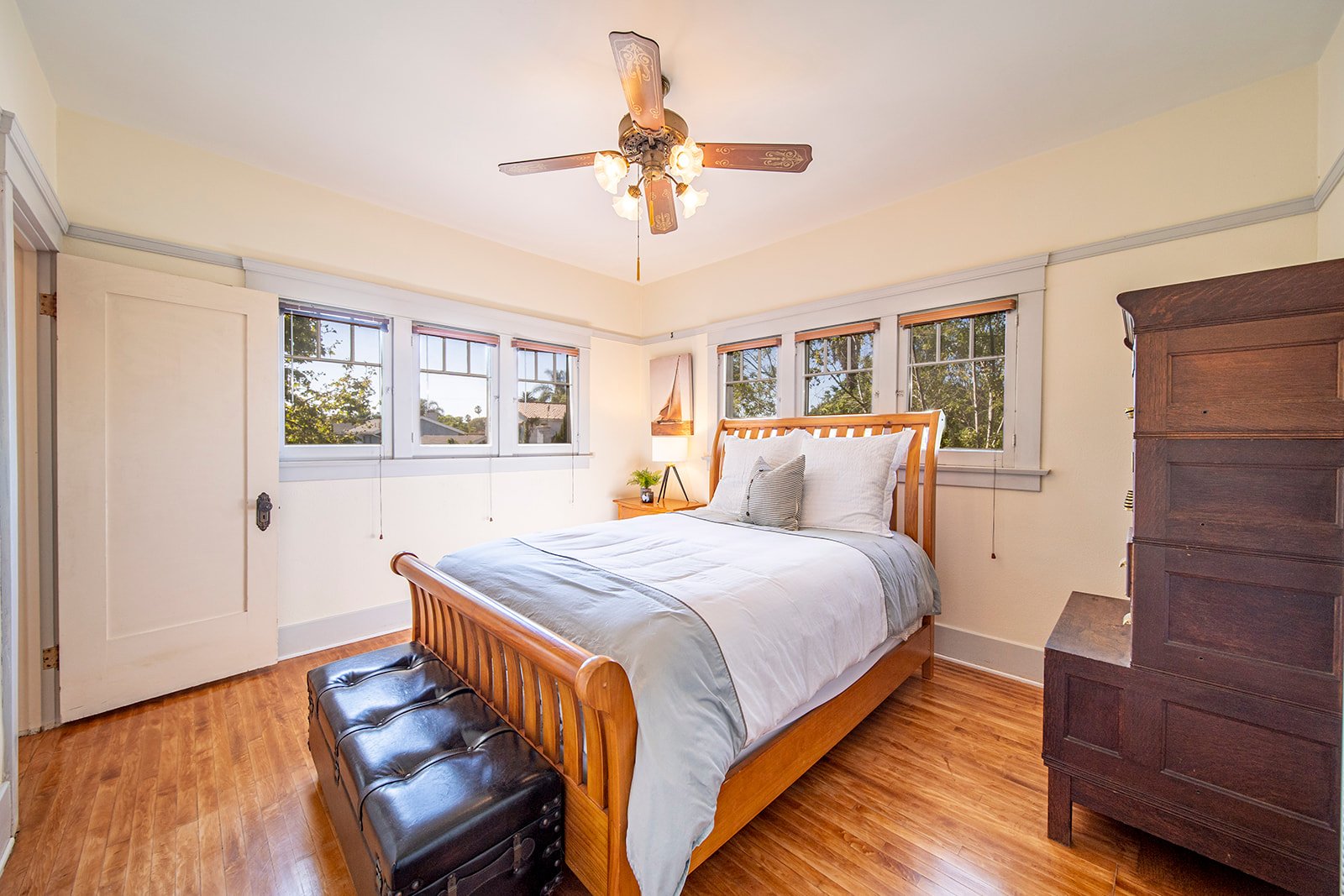When it’s time to sell your home, the question of how to present or “stage” the rooms is an important one. The bottom line is simple: staging helps sell homes. Yet most people live with their personality in every room. Inherited furniture, favorite artworks, and a lifetime of collected items make the space their own. And while that is great when you’re living in your home, when it comes time to sell, you no longer want the space to look and feel like your own. You want to make sure potential buyers can see themselves living in your home, and this requires taking away some of the more unique parts of your decorating.
For some inspiration on how to stage your home, here’s an interview we did with Megan Edner from Revival Staging. She is a professional stager and gives many great tips to help you stage your home on your own!
Before you start thinking about staging, make sure you’re ready to sell! Click here for our free home seller’s guide!
While decluttering is one of the first things a Realtor may suggest you do before putting your home on the market, knowing what to do beyond that may be more of a challenge. If the video above has inspired you to stage your own home, here are a few best practices for staging your home using your own belongings:
Avoid Big Prints
Prints can be overwhelming, and the larger the object, the more distracting it becomes. The floral print couch may have followed you through the last three residences, but those big blossoms may be distracting for someone looking at your home. A bright and bold wallpaper can have the same effect, overwhelming the other details of a room.
Exception to the Rule: Small pops of a bold pattern, like in throw pillows and side chairs, can help add some excitement to a neutral palette. While it’s a good idea to avoid anything too harsh on the eyes, you also want a little pizzazz.
Oversized Furniture Isn’t Always A Good Idea
The comfort of an oversized piece of furniture is great for use, but not necessarily for the visual of the room. The California King sleigh bed in the master bedroom might be blissful to sleep in, but could make the room appear tiny to a buyer. Consider renting a simple full or queen bed to allow space for side tables, dressers, or perhaps a small vanity for display. This goes for living rooms as well. The giant sectional couch is great for family hangout time, but may limit a buyer’s vision for the room and seem overwhelming. Give visitors ways to access windows and maneuver around sitting areas. It will make your home feel larger and less oppressive.
Exception to the Rule: A little bit of decadence can be helpful in truly large spaces. If a home has a master suite that bedroom furniture and a recreational area are still struggling to fill, there’s nothing quite like a comfortable chaise lounge or elaborate bed frame to fill the visual space. High ceilings can also occasionally demand tall furniture to draw the eye upwards. If you’re feeling a room is too empty, ask your Realtor or a designer how you might jazz it up.
Try To Not Use Furniture That Shows Its Age
Like most trends, some styles of décor fall in and out of favor over the years. Perhaps you have heirloom furniture, or you simply haven’t replaced furnishings in a while. While having pieces from different eras is not a deal-breaker in staging, it is important to make sure that the room doesn’t feel like there’s a “theme” to it. The more purposefully themed the room is, the harder it is for buyers to see past it and truly consider the space.
Exception to the Rule: One or two hot trends in the house can be fun as long as they don’t break any of the other rules of staging. Here are some trends to get you started.
Stage the “Spare Room”
Maybe you have a catch-all room in the house. Whether this acts as a craft room, a game spot, or an occasional office, it’s important to make it clear what the room’s purpose is. While you may not have a use for it as the current owner, your prospective buyers are looking for value in the room. Staging the room as a bedroom or a home office will serve you better than showing the room as a storage spot.
Exception to the Rule: If you don’t have the furniture available to outfit a spare room, it may be worthwhile to allow it to remain empty for the duration of your house showings. If you’re engaged with a staging company to help supplement the staging furniture you have available, you can work around this, but ultimately a functional space is more important than showcasing your project storage or wardrobe room.
Ask Questions If You’re Not Sure
Nobody expects you to be a staging expert, despite all the shows on HGTV. While many people are able to prepare their home for showings, it’s very common to have questions. Your Realtor and the vendors they work with should be able to help recognize good work, problem spots, and suggestions that will help with photos, open houses, and appealing to buyers. If the price of staging your home is what you’re worried about, just know that staging almost always increases the selling price of a home. The Shannon Jones Team can also help you work out a way to pay for renovations and staging after you sell your home.
For more information on that program or any others about selling your home, please fill out the form below or give us a call at 562.896.2456. We are happy to help!




Leave a Reply